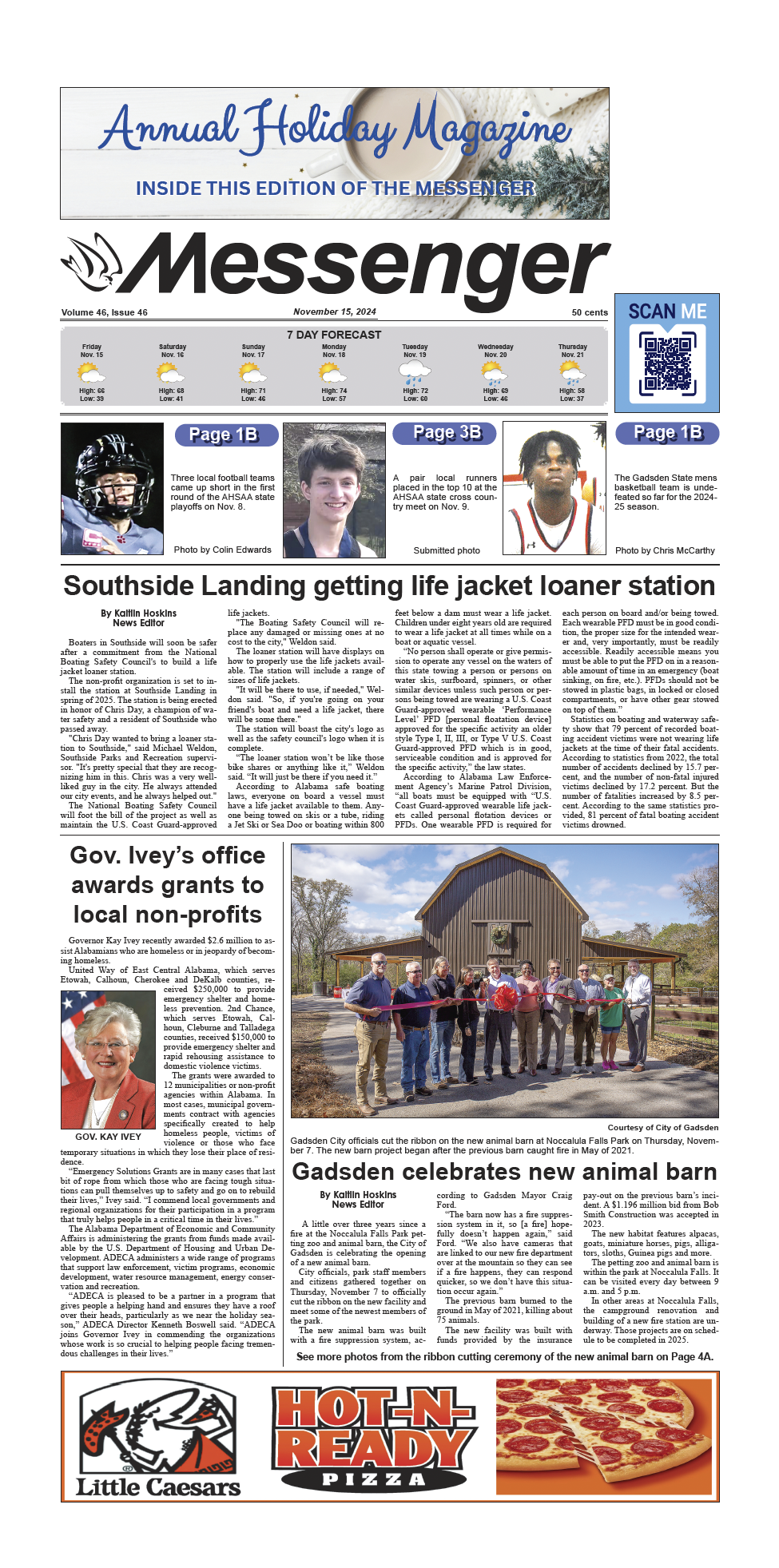The Vagabond spent time in Montgomery this week pulling information out of the State of Alabama Archives with City of Altoona councilman and historian Ryan Cole.
If you have never been to the state archives, you must go!
This past February, the archives opened up a new museum called “Voices of Alabama.”
The museum was a 12-year undertaking with many folks involved in creating it.
Prior to the opening, the Vagabond ran into many folks.
The first person was Marc Golden, who had a group of 4th graders from Hokes Bluff Elementary School.
Everyone was having a jolly good time. Marc said that he had just run into Blaine Galliher, who works as a legislative director for the state.
The Vagabond also ran into the Director of the Archives, Steve Murrey (who has been an Alabama Historical Association president and friend of The Vagabond for many years), as well as John Hardin, Debbie Pendleton and Gadsden’s own Sherrie Hamil, who once was over the Gadsden Museum of Arts. Prior to entering the archives, there was a free tour next door to the White House of the Confederacy.
This week the Vagabond has shifted away from last week’s Coosa River monsters to around the Coosa River.
The Fourth of July not only is known as the anniversary of the founding of our nation but also the date that Gadsden became a brainstorm of some of our founding fathers.
On July 4, 1845, people who lived at Double Springs heard sounds that were new to them. Rushing to the banks of the Coosa River, they saw a sight that became common for many years.
Coming up the river was a steamboat, the first to have been seen in the area.
As the residents lined the bank of the river, they waved to the crew. The boat moved toward the people and docked at the site of the present-day Broad Street Bridge.
The Hughes brothers, Gabriel and Joseph as well as John S. Moragne, were among those persons witnessing this grand occasion.
The arrival of “The “Coosa” with its captain, James Lafferty, brought forth the dream of a city on the banks of the beautiful Coosa River. Lafferty remained for a short visit.
A proposal was made for him to establish a dock at the location, and a town to be laid out to become Lafferty’s Landing.
Lafferty agreed to the establishment of a dock, but declined the offer that the town bear his name.
The Coosa had been built in Cincinnati, Ohio, and made its way down the Ohio and Mississippi Rivers to New Orleans. From there, she made her way to Mobile and up the Mobile, Alabama and Coosa Rivers to Wetumpka, where the river became too shallow for the boat.
The boat was dismantled and hauled by wagons to Greensport, where it was reassembled and launched on her first journey up the river.
This marked the beginning of the era of the steamboats, for what was to last for more than 50 years.
King Cotton reigned supreme in this area and the river provided a means of getting the harvested cotton to markets.
In “Old Steamboat Days,” Marvin B. Small gives us the following view of Lafferty’s Landing:
“In the years long gone, Broad Street extended all the way to the river. In order to make this extension, a deep cut was made in the bluff, [with] slaves with pick and shovel performing the arduous work.
“The road extended from First Street down to the foot of the bluff.
There it branched; to the right it led to the steamboat warehouses and wharf.
The left branch led to John Wisdom’s ferry. The road was always rough and rocky and there were deep ruts cut by the wheels of the heavily loaded wagons hauling freight to and from the landing.
At the north side of the road was a wide board walk for the convenience of the foot passengers.”
The Civil War and its effect on the Southern economy caused a decline in steamboat activity, but the industry rebounded.
By 1873 some six boats carried 30,000 bales of cotton from Rome, Ga., in a single season.
In the latter part of the 19th century, several steamboats were constructed in Gadsden. In the early 1880’s, The City of Gadsden was completed on the west bank of the Coosa near where the old bridge now stands.
It was followed shortly after by the launch of the boat “The Willie C. Wagnon,” built by Rev. Peter Wagnon, a prominent lumber and timberman of the Ball Play area, and named for his daughter.
The Willie C. made her maiden trip from Gadsden to Rome in November of 1898.
Other steamboats on the Coosa River were The Etowah Bill, The Dixie, The Hill City, The Clifford B. Seay, The Joel Marable, The Sidney P. Smith, The Conasauga, The John J. Seay and The Magnolia, which at 333 tons was the largest and finest of all the boats.
Two other unique boats were The Hercules, a side-wheeler, and The Wanderer, which had a propeller instead of the traditional stern paddlewheel.
Most of the boats had square sterns with curved bows and averaged 150 feet in length.
The primary purpose was to haul freight, but the boats often were chartered for the day by organizations for all-day social functions, particularly the church groups for Sunday school picnics.
The last commercial freight carrier on the Coosa River was The Cherokee III, which sank at the wharf in Gadsden in 1922.
The name of the Annie M was changed to the Leota.




